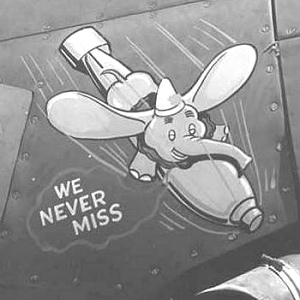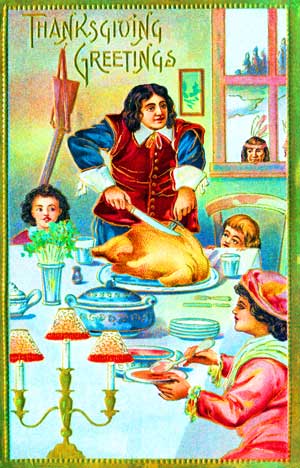While Walt Disney was trying to build his animation empire, a significant factor was keeping it from being as big and successful as it otherwise could be. While his first full-length animated movie, Snow White and the Seven Dwarfs, did extremely well at the box office both in the United States and internationally, his three follow-ups (Pinocchio, Fantasia, and Dumbo) did not do as well. The reason was that European audiences were not going to the movies at the time, thanks to the start of WWII there. This cut into Walt’s international profits.
WWII U.S. Government Cartoon, “Insects As Carriers Of Diseases”
Soon, the United States would become involved in the war, too. In fact, the US entered WWII just after Dumbo was released on October 1941. Walt decided to help with the war effort in the best way he knew how — by making movies. He formed the Walt Disney Training Films Unit as a sub-division of the Disney Brothers studio. The purpose of this sub-division was to make films for the military to assist in their training for entering WWII. Some of the films Walt’s company made for the military included Four Methods of Flush Riveting and Aircraft Production Methods.

Walt also met with the US Secretary of the Treasury at the time, Henry Morgenthau, Jr. The two of them agreed that Walt’s company would produce short cartoons featuring his Donald Duck character (who was second in popularity among the public only to Mickey Mouse himself), with the purpose of having Donald promote the purchase of war bonds.
“The insignia meant a lot to the men who were fighting … I had to do it … I owed it to them.”
– Walt Disney
In 1941 Walt Disney produced this short film, which promotes Canadian War Bonds, for the Canadian government.
Walt didn’t stop there in his patriotic efforts, either. He also produced propaganda films (just like the Axis powers were doing in their own territories in Europe). Some of these films included Der Fuehrer’s Face and Victory Through Air Power. Der Fuehrer’s Face won an Academy Award.
Victory through Air Power
While Walt was being an enthusiastic and important supporter of the United States’ war effort, the films he made for the military and the short Donald Duck cartoons only broke even. He made enough back on them to pay for the production costs, and that was it. On top of this, Walt’s next cartoon movie, Bambi (which had begun production back in 1937), lost $200,000 at the box office. This loss, together with the losses from Fantasia and Pinocchio, put Walt’s company a staggering (for the time) $4 million in debt to Bank of America.
Walt had a meeting with executives from Bank of America to discuss the company’s debt, as well as the overall future of the company. It was good news for Walt that the founder of the bank (who was also its chairman), Amadeo Giannini, was a fan of his work, and told the other members of the board:
“I’ve been watching the Disney pictures quite closely, because I knew we were lending them money far above the financial risk. They’re good this year, they’re good next year, and they’re good the year after that. You have to relax and give them time to market their product.”
The company was saved, but Walt decided to produce fewer cartoon movies and shorts as the war went on. This was not only due to the cost and the war but also to new competition in the animation scene, with companies like Warner Bros. and Metro-Goldwyn-Mayer jumping on board the animation business. Because of finances at the Disney company, Roy Disney suggested the studio do more projects that combined live-action and animation, which was something no one else was doing much of at the time. After the war, the Disney Company produced a series of live-action nature films that were quite popular with the public. The series was called True Life Adventures. Seal Island was the first movie in the series, and it won an Academy Award for Best Short Subject (Two-Reel).
During the war, Walt became more conservative politically than he had been previously. In the 1940 presidential election, he switched from his previous Democratic Party alliance to side with the Republican Party. Because of the switch, he gave a generous amount of money to the presidential campaign of Thomas E. Dewey in his 1944 presidential bid. In 1946, Walt founded the Motion Picture Alliance for the Preservation of the American Ideals. This group was meant to stand against Communism, Fascism, and any similar beliefs that undermined the American way of life.
Walt also testified before Congress at the House Committee on Un-American Activities in 1947, just after the war, when Communism was one of Congress’s biggest concerns. At his testimony, Walt implicated several of his former animators, as well as those at his company who had acted as labor union organizers during the strike, as Communists. He told Congress he believed that the 1941 strike was part of a Communist scam to attain a high level of influence in Hollywood.
With the war done, Walt took his wife and daughters and moved to a new house in the Holmby Hills area of Los Angeles. This was in 1949. The home had a large back yard, and Walt, inspired by his friends Ward and Betty Kimball and their personal back yard railroad, decided to build one of his own. He designed and built a miniature steam railroad in his new back yard that actually worked, and he called it the Carolwood Pacific Railroad, after the name of the street the new house was located on. The locomotive car was named Lilly Belle, after Walt’s wife.
The war over, and moved into his new home, with his railroad project complete, Walt went back to producing cartoon movies. His next project, Cinderella, was released in 1950, eight years after his previous movie. It exceeded all expectations, having been produced at a cost of just over $2 million, and earning almost $8 million at the box office. The Disney Company was back on top and profitable once more. The success and scope of projects of the company just increased from there. The name Disney was becoming recognized in every household in the United States.




